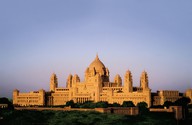Although India’s latest budget has increased the allocation for tourism by less than 10 percent, the tourism ministry remains hopeful that it can bring in at least seven million foreign tourists to the country during this fiscal year, an increase of one million when compared to the six million figure of the last year.
Some ministry officials hope to go even higher to almost 10 million tourists for 2012. They refer to the UNWTO target of one billion tourists by 2012 and say even if they can bring just one percent of them to India, they can reach the lofty target of 10 million.
They point out that the ministry plans to hold its own National Travel Mart titled Global Travel Mart India in the year 2012-13.
Currently, India’s tourism ministry has 14 overseas offices, including in Paris, Frankfurt, New York, Toronto and Dubai, and to enhance its reach across the globe, it has decided to appoint marketing representatives in the countries where it does not have tourism offices.
But the officials also acknowledge that there is a lot of work to be done for the development of tourism in the country.
Besides building modern infrastructure, lowering luxury taxes can be one of the effective steps. The tourism ministry has requested other government departments to work with state governments on this. The ministry has also requested hotels to cut tariffs.
It has the support of tour operators, who point to the fact that Indian hotel tariffs remain high compared to most countries.
But the hotel industry argues that it is also driven by the market as any other business and some of the hotels that have reduced the rates by 30 percent are yet to see any improvement.
Experts say the approach to attracting more foreign tourists should be two-pronged. One is to bring more foreigners to India for tourism and the second is to keep them coming again and again. That we can do, she says, by exposing them to the top exotic spots of India which they would love to go to but have not visited so far.
One expert suggests the ministry should start advertising about those exotic spots in the departure lounges of the airports. For example, he says, when foreign tourists end their vacation in Goa and are ready to go home, the topmost question in their minds is where to go on vacation next time. So, he says, we can use the departure lounge of the Goa airport to advertise tourist spots such as Kochi and Ooty. And then for the tourists who are ending their vacations in the south, we can tell them how to enjoy the pristine white sand beaches of Goa or the historical grandeur of Rajasthan.
On its part, the tourism ministry is increasing awareness about India in foreign countries through such campaigns as “Incredible India” and based on the increase in the number of tourists so far, it has been termed quite successful.
But B.B. Roy, assistant director general in the overseas marketing division, is also up on domestic tourists, who, he says, are at least several times more in numbers than foreign tourists. He says the only way to do that is to add relevant ways to enhance the enjoyment of the tourists. Manali, for example, he says, should offer not just snowflakes and scenery but also skiing facilities of international standards.
So, Roy says, when tourists, foreign or domestic, pick up a spot they should get something more than just sightseeing so that the whole family can enjoy the trip and go there again and again.
(29-03-2012 – Ravi M. Khanna is a longtime South Asia observer who has headed the South Asia Desk in the Voice of America newsroom in Washington. His books include “TV News Writing Made Easy for Newcomers”, and he can be reached at [email protected]).
IANS
The opinions, beliefs and viewpoints expressed by authors, news service providers on this page do not necessarily reflect the opinions, beliefs and viewpoints of Hill Post. Any views or opinions are not intended to malign any religion, ethnic group, club, organization, company, or individual.
Hill Post makes no representations as to the accuracy or completeness of any information on this site page.



